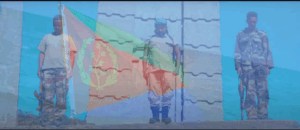By Daniel Tesfa and Mirjam van Reisen
AXUM | 7 August 2025 (IDN) — The Horn of Africa, particularly Tigray, stands at a precarious crossroads. Ximdo is a new political strategy with at the centre a new alliance between the Tigray People’s Liberation Front (TPLF) with Eritrea People’s Front for Democracy and Justice (PFDJ). Ximdo is framed as a peace initiative between TPLF and PFDJ but widely seen as a veiled power play risking renewed conflict. The term “Ximdo” in Tigrinya means “connection,” “alignment,” or “coordination of distinct actors to function as one” in Tigrinya, a word now laden with political significance. Eritrea’s involvement in conflicts in Tigray and Sudan underscores a consistent pattern of regional destabilisation. Hence, critics in Tigray describe Ximdo as a betrayal of the victims of the war, including the Internally Displaced Persons (IDPs), arguing this is a cynical ploy by some factions to retain power.
From War Architects to Peace Emissaries?
At the centre of the Ximdo controversy is Awel Seid, an Eritrean government propaganda figure who once glorified the atrocities committed by the Eritrean army during the brutal Tigray War of 2020–2022.

Awel Seid pictured in uniform on posters across Europe to promote festivals drumming up support for the participation of Eritrea in the war against Tigray (2022) (left), and in a promotion of Ximdo (2025) (picture on the right).

Awel Seid and Eritrean soldiers conducting mission accomplished prayer in Axum Obelisk in the aftermath of the Axum massacre.
A face of Eritrea’s wartime propaganda, Awel Seid now fronts Ximdo’s peace campaign, unsettling many Tigrayans. His rebranding, alongside cross-border meetings in towns scarred by atrocity, is seen as a strategic move by Eritrea to reassert control over Tigray. Critics view Ximdo not as reunification, but as a diplomatic trap, led by figures complicit in past violence, now posing as architects of peace while trust remains shattered. The responsibility of this complex entanglement was taken long before the 2020 conflict. As early as 9 April 2017, President Isaias Afwerki signalled a desire to eliminate the TPLF and Tigray, declaring “Game Over” on Oromia Media Network (OMN). By 2018, a secretive peace deal between Isaias and Ethiopia’s Prime Minister Abiy Ahmed appeared laying the groundwork for military collaboration against Tigray. The war that followed devastated civilian life and unleashed a humanitarian catastrophe, with atrocities committed by Eritrean and Ethiopian forces in Tigray. Both Isaias and Abiy used dehumanizing language to justify their war campaign. Isayas used the derogatory term “woyane”, word-playing on Tigrayans being lesser human beings whose “game was over”. Abiy likened the TPLF and Tigrayans to cancer and the devil, while his advisor Daniel Kibret compared Tigrayans to extinct Tasmanians. This hate-speech was the fertile ground for the atrocity crimes that took place during the 2020-2022 war. With such a foundation, the current “peace” narrative between TPLF and PFDJ is, to many, incomprehensible.
Internal Divisions and the Struggle for Political Survival
Post-war, the TPLF finds itself fragmented and politically cornered. The Cessation of Hostilities Pretoria Agreement of 2022, signed between TPLF and the Federal Republic of Ethiopia, left Tigray in a liminal state of “no war, no peace”. Eritrea was not a signatory to the Pretoria Agreement. For the TPLF, Ximdo is presented as a way to break Tigray’s isolation from a full siege to a half-siege, as its activists claim. But critics argue that allying with Eritrea only deepens that isolation, tethering Tigray to a pariah regime. Executive Committee member of the TPLF Abraham Tekeste has dismissed public concerns, stating, “We don’t seek anyone’s approval” referring to this Ximdo alignment with Eritrea. Leaders like war TPLF President Debretsion Gebremikael have turned to Isaias, possibly seeing Eritrea as a counterbalance to Abiy’s growing power. More radical rhetoric has emerged, with some TPLF officials advocating for the dissolution of Ethiopia and establishment of the Tigray republic, threatening those who oppose the alliance. Eritrea has shown no interest in supporting a Tigrayan republic. In its state newspaper, Hadas Eritrea, officials condemned the idea as historically and ideologically flawed. They warn that TPLF nationalism could undermine Eritrea’s own claims to legitimacy. The PFDJ also demands the TPLF revise its narrative of war atrocities, rebranding atrocities committed by the Eritrean army as collateral damage. Meanwhile, others within the TPLF, such as Alem Gebrewahid, advocate for reintegration into Ethiopia’s political mainstream.
Federal Government of Ethiopia Response: Containment and Countermoves
In Addis Ababa, Ximdo is viewed as a threat to national unity. Prime Minister Abiy has openly criticized the TPLF’s alliance with Eritrea, mocking their reliance on a regime “that cannot support itself.” He has emphasized Ethiopia’s capabilities of modern warfare, drones, intelligence, and cyber operations, over the TPLF guerrilla tactics, pointing out these are backward. The federal government is reinforcing alliances in the Afar region, which is hosting anti-PFDJ and anti-TPLF groups like the Blue Revolution and the recently created Tigray Peace Force (TPF). This dual strategy by Ethiopia aims to isolate the TPLF while building an alternative power base that aligns with Ethiopia’s broader strategic goals. Domestically, Abiy’s administration continues to frame itself as the stabilizing force in the region, despite widespread accusations of rights abuses. Internationally, Ethiopia is positioning itself as a bulwark against Eritrean dictatorial regimes’ destabilising role in the Horn of Africa.
IDPs in Tigray
The 2020-2022 Tigray war has left many Internally Displaced Persons (IDPs) without a future. IDPs, particularly those from Western Tigray, have been removed from their land, without any return arranged following the Pretoria Agreement. The IDPs are stuck, without any pathway to returning back to their homes. Tigray leaders such as the TPLF Chairman Debretsion, suggest that IDPs prioritize saving the party over returning home. These statements have ignited outrage. Displaced communities feel manipulated. The IDPs accuse Debretsion that the TPLF is using their plight as political leverage and demand a solution in which they can rebuild their lives.
Five Scenarios: No Peace in Sight
How will the Ximdo strategy help create possibilities for IDPs to rebuild their lives? The following scenarios can be envisaged:
- Ximdo Holds: Eritrea expands its influence over Tigray, using the TPLF to entrench a corridor of control. Ethiopia responds with increased militarization in Afar. Civilians face renewed fear, recruitment, and a humanitarian crisis. The situation of IDPs remains unchanged.
- TDF vesus TPF War: Intra-Tigrayan conflict erupts, with Eritrea backing the TDF and Ethiopia supporting the TPF. Internal violence fractures Tigrayan society and worsens displacement.
- Ximdo Collapses: The alliance disintegrates as Eritrea refuses to support Tigrayan statehood. Political chaos ensues, deepening the governance vacuum in Tigray. There is no solution for the IDPs.
- Eritrea Leverages Ximdo with Ethiopia: Isaias uses the alliance as a bargaining chip in backchannel talks with Ethiopia. TPLF is side-lined, and Tigrayans face renewed marginalization. Eritrea continues to support occupation of Tigray land and IDPs can not return or live under Eritrean occupation.
- War via Afar: Ethiopia targets Eritrea’s Assab access, triggering a regional war. Afar and Tigray become battlegrounds once more as Eritrea and Ethiopia fight to mobilise support from Tigray. IDPs are caught in the middle of another war.
Across all scenarios, one constant remains: the situation of IDPs does not improve and Tigrayans will not find support to rebuild their lives. Whether used as buffers in military strategy, pawns in diplomatic games, or rhetorical tools in political speeches, the IDPs are likely to be used as pawns in all of these scenarios. The Ethiopian federal government, for its part, has offered little more than rhetorical support, leaving IDPs trapped between betrayal and neglect. In all of these scenarios, the promise of post-war recovery is eroded?
A Future beyond War Requires Courage
The political strategy of Ximdo is puzzling many in a region, which is recovering from a brutal war. The lack of progress in rebuilding after the war is not caused by lack of resilience, but by leadership choices prioritizing political survival over service to the Tigray population. By aligning with the Eritrean regime which committed atrocity crimes in Tigray, the TPLF risks trading one form of isolation for another, undermining both its credibility and the prospects for justice. Ethiopia’s response, militarization and proxy support, threatens to ignite a broader regional conflict. The people of Tigray deserve more than being treated as pawns in a strategic chess-play. Only by putting the survivors at the centre of policies focused on their rehabilitation can Tigray begin to reclaim its future. This future should be one not written by those who inflicted harm, but by those who endured it.
For more reading: https://www.researchgate.net/publication/394190560_The_Ximdo_Gamble_TPLF-Eritrea_Alliance_and_the_Fragile_Peace_in_Tigray_and_the_Horn_of_Africa [IDN-InDepthNews]

